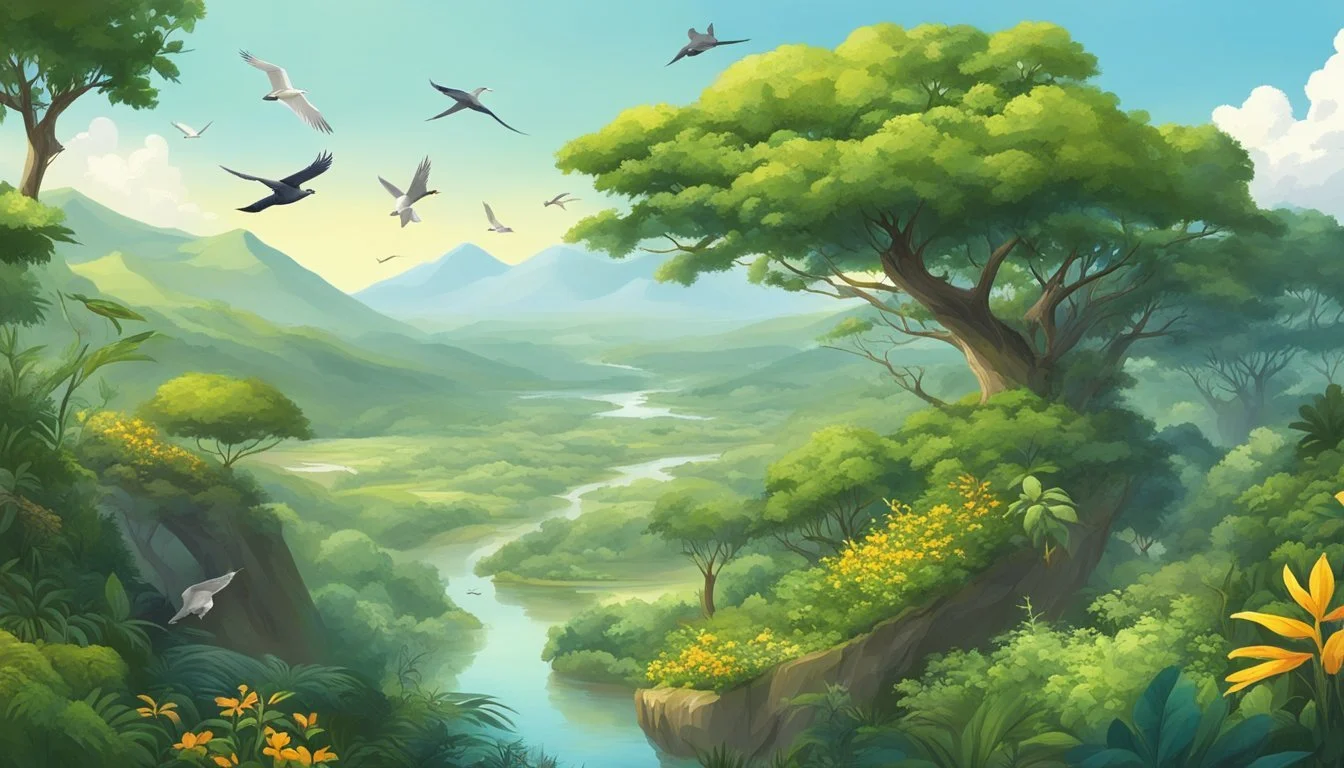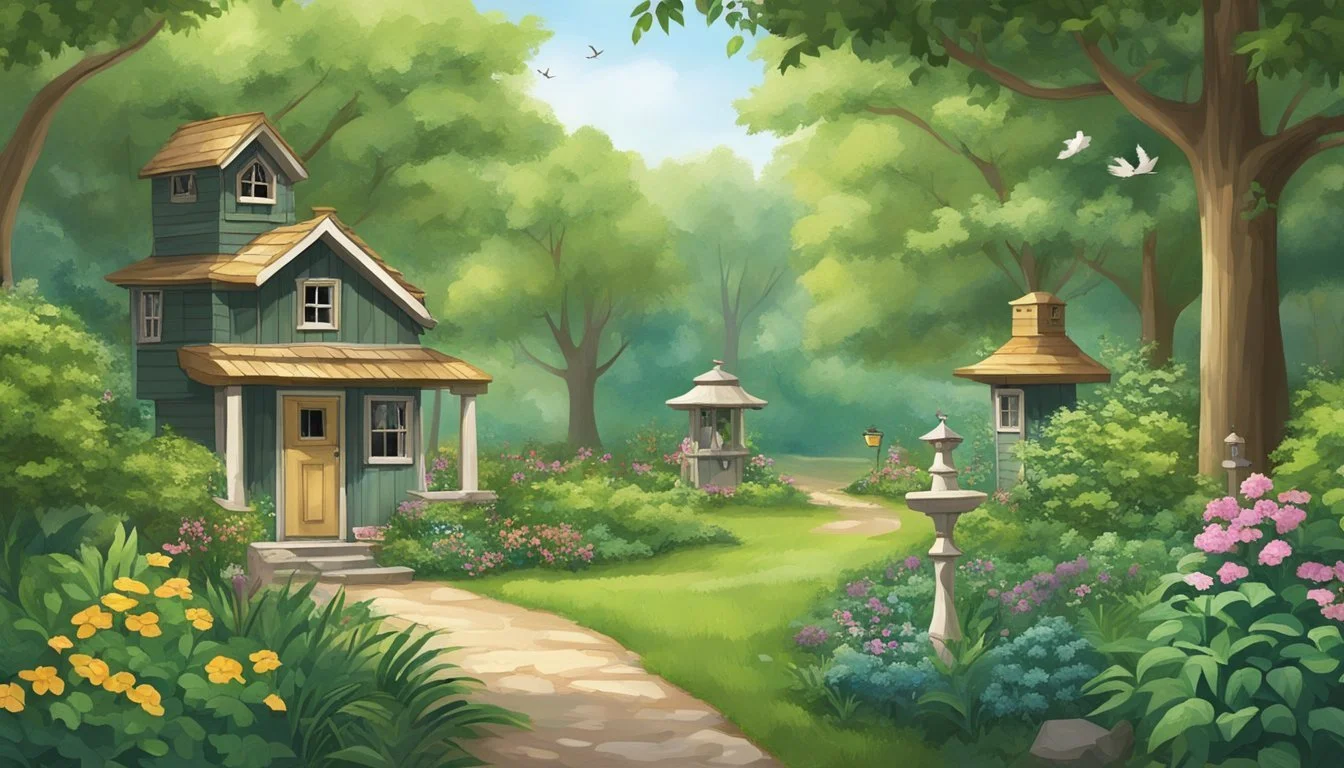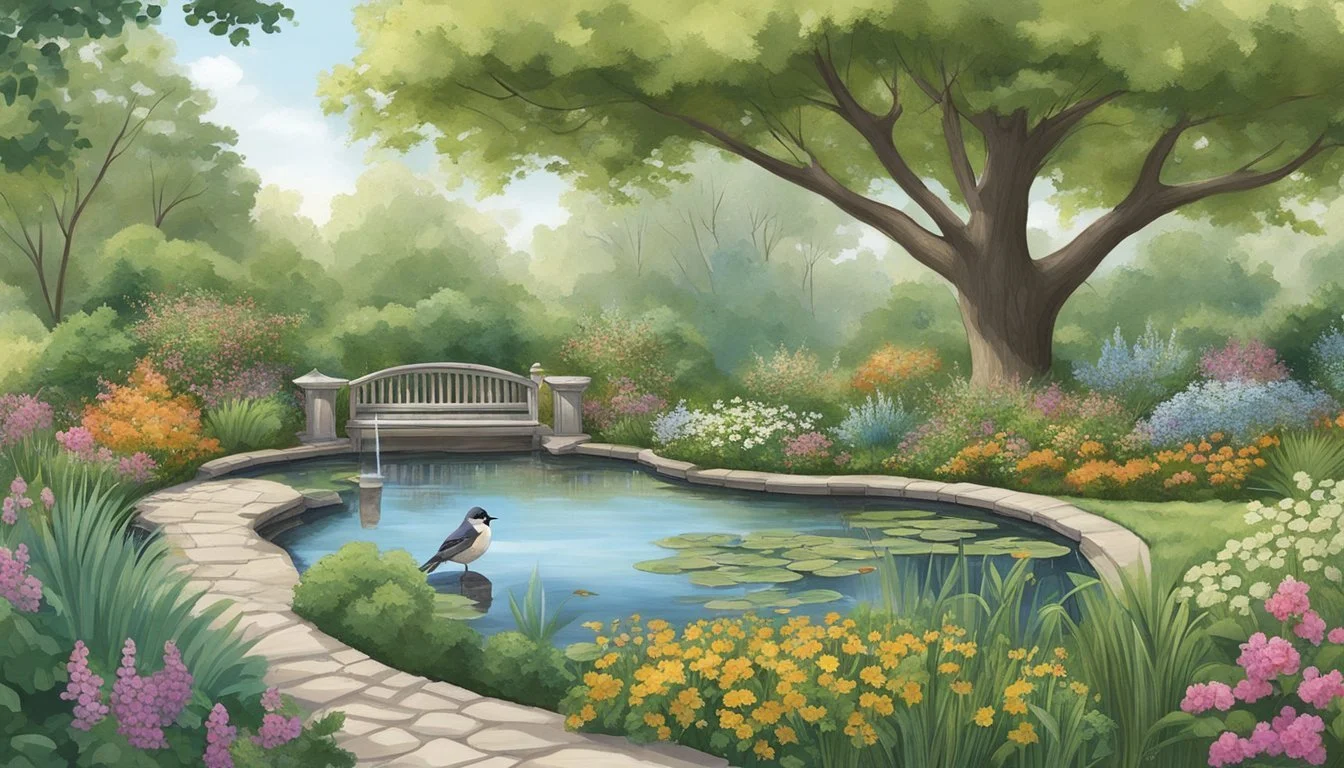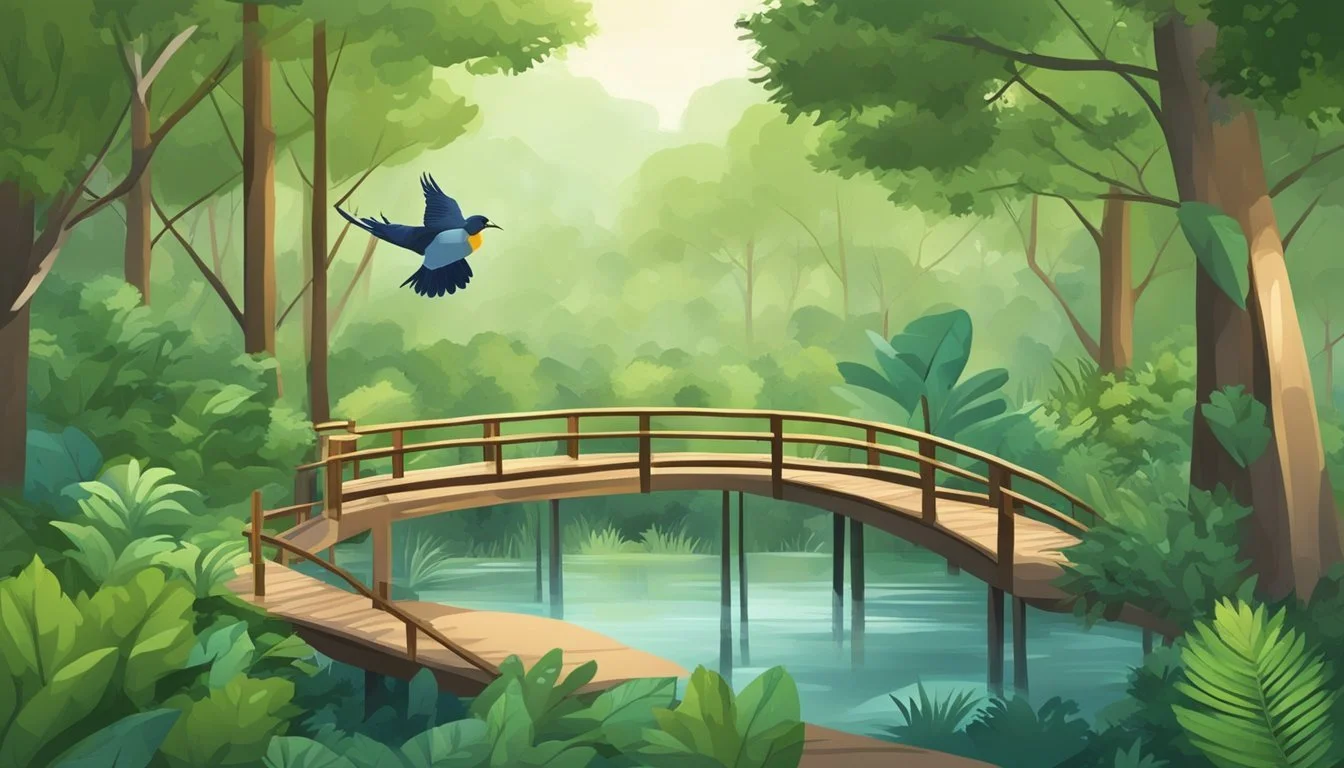Free Land for Birdwatchers
Creating a Sanctuary for Avian Enthusiasts
Birdwatching enthusiasts dream of having a dedicated space where they can observe their favorite feathered friends in their natural habitat. Creating a bird sanctuary offers a unique opportunity to transform free land into a haven for birds. By focusing on essential elements like habitat, water, and food, birdwatchers can cultivate a space that attracts a diverse range of species, benefiting both the avian population and the observer.
A successful bird sanctuary begins with the right habitat. This involves removing invasive plants and replacing them with native vegetation that provides shelter and nesting sites for different bird species. Adding water sources such as bird baths or shallow bowls can significantly enhance the appeal of the sanctuary, offering birds a place to drink and bathe. These elements combined create an ecosystem that supports bird life and promotes biodiversity.
The installation of bird feeders can further enrich the sanctuary, offering a reliable food supply year-round. Bird feeders draw a variety of species and provide birdwatchers with the opportunity to observe feeding behaviors up close. This holistic approach ensures that the sanctuary meets the essential needs of birds, creating a thriving environment for them to inhabit and allowing birdwatchers to enjoy the beauty and tranquility of nature.
Assessing the Land
A thorough assessment of the land is pivotal for creating a successful bird sanctuary. This includes evaluating the site's potential, understanding the local ecosystem, and identifying native species.
Evaluating Site Potential
When evaluating the site, consider factors such as soil quality, sunlight, and the presence of water sources. Soil plays a significant role in the types of plants that can thrive and support local wildlife.
Assess the terrain and existing vegetation to understand what modifications may be needed. Check for any man-made structures or environmental hazards that could impact birds. Additionally, observe the area's exposure to sunlight and precipitation patterns, which are critical for both plant growth and bird activity.
Understanding Local Ecosystem
Understanding the local ecosystem includes considering the birds, plants, and other wildlife that interact locally. Identify the existing native species of plants and animals, as these are best suited to the environment and play essential roles in the ecology.
Be aware of invasive species that may disrupt the natural balance. Studying seasonal variations and how they affect the local ecosystem will help plan habitat features like bird baths or nesting boxes.
Identifying Native Species
Identifying native species helps ensure that the sanctuary supports the local wildlife. Research which birds are indigenous to the area and what specific habitat features they require.
Use resources from local wildlife organizations or apps to help identify plant and bird species. Knowing which plants to incorporate will provide the essential food and shelter birds need. Focus on creating a diverse habitat with trees, shrubs, and water sources to attract a variety of birds.
Designing the Sanctuary
A bird-friendly sanctuary requires thoughtful design, focusing on the landscape and habitat features to support various bird species. Proper planning and the inclusion of essential elements will attract birds and foster a thriving environment.
Landscape Planning for Birds
The first step is to consider the overall layout of the sanctuary. Opt for a mix of trees, shrubs, and ground covers to provide multiple levels of shelter and feeding opportunities. Incorporate native plants, as they are best suited to local climates and require less maintenance. Additionally, placing trees and shrubs strategically will create essential shade and cover, protecting birds from predators and harsh weather.
Water sources are crucial in bird-friendly landscapes. Installments like a small pond or a birdbath can provide drinking and bathing spots. Ensure that water features are shallow and include perching spots for safe drinking and preening. Introducing layers of vegetation and water will make the environment more inviting to different bird species.
Creating Habitat Features
Habitats should offer food, water, and shelter in every season. Adding bird feeders filled with seeds, nectar, or suet will attract various birds and supplement their natural foraging. Plant fruiting trees and bushes to provide natural food sources throughout the year.
Nest boxes and roosting sites are vital for breeding and resting. Different birds prefer different types of nest structures, so include a range of box designs and sizes. Ensure the boxes are secure and placed at appropriate heights.
Water features, such as ponds or birdbaths, should be kept clean and filled regularly. Create microhabitats with diverse plants to offer cover and breeding grounds, ensuring a dynamic and supportive environment for the birds. Incorporate dead wood or leave brush piles to create natural shelters and foraging spots.
Adding these elements will create a sanctuary teeming with life and activity, supporting the local bird population and making the area a haven for birdwatchers.
Developing Habitats
Creating a sanctuary for birds involves careful consideration of planting native plants, attracting a variety of bird species, and maintaining a balanced ecosystem. These elements ensure a sustainable and enriching environment for both birds and other wildlife.
Planting Native Plants
Native plants are essential to developing a healthy bird habitat. These plants provide the necessary food and shelter. Local tree species, shrubs, and perennial grasses are adapted to the regional climate and soil, creating a sustainable environment.
Key native plants:
Trees: Oaks, maples, and pines.
Shrubs: Serviceberry, elderberry, and sumac.
Flowers: Coneflowers, black-eyed Susans, and asters.
Regular maintenance, such as seasonal pruning and removing invasive species, supports plant health and biodiversity.
Attracting a Variety of Birds
To attract different bird species, provide diverse food sources, nesting sites, and water. Use feeders filled with seeds, nuts, and berries, and install birdbaths. Birdhouses and nesting boxes tailored to specific species encourage breeding.
Create different landscape zones:
Gardens for nectar feeders attract hummingbirds.
Berry bushes attract fruit-eaters like robins.
Open areas with grasses attract ground feeders like sparrows.
Ensure fresh water availability by regularly cleaning birdbaths and refreshing water sources.
Maintaining a Balanced Ecosystem
A balanced ecosystem supports not just birds but also insects, pollinators, and small mammals. Avoid using chemical pesticides, as they harm both pests and beneficial wildlife. Introduce natural pest control methods, such as encouraging insect-eating birds by planting insect-friendly plants.
Promote biodiversity:
Brush piles offer shelter.
Dead trees provide nesting cavities.
Pollinator-friendly flowers support bees and butterflies.
Regular monitoring and adaptive management help maintain this balance, ensuring the habitat thrives year-round.
In summary, by focusing on native plants, diverse bird attraction strategies, and maintaining ecological balance, one can create a flourishing sanctuary for birds and other wildlife.
Food and Water Resources
Providing food and water resources is essential to attracting and maintaining a healthy bird population. The right choices in plants and the installation of specific feeders and baths can make a significant impact.
Selecting Plants with Nutritional Value
Choosing locally native plants is crucial. These plants often have nutritious insects, berries, nectar, and seeds that birds rely on.
Trees like oaks and maples support caterpillars and other insects that birds eat.
Shrubs like elderberry and serviceberry offer fruit that provides vital nutrition.
In winter, evergreen plants such as holly provide shelter and food.
Mixing different types of plants helps create a balanced ecosystem. Birds benefit from a variety of food sources available throughout the year. Plant diversity supports different bird species and ensures a year-round supply of food.
Installing Bird Feeders and Baths
Bird feeders should be placed in safe and accessible areas. Different feeders cater to the preferences of various bird species.
A tube feeder filled with sunflower seeds attracts finches and sparrows. Suet feeders provide high-energy food that attracts woodpeckers and nuthatches.
Install feeders near tree cover to offer shelter from predators.
Bird baths are equally important for hydration and cleanliness. Place bird baths in shaded areas to keep water cool. Regularly clean and refill them to prevent bacterial growth.
Heated bird baths can be useful in colder climates, ensuring a steady water source even in freezing temperatures.
Using a combination of feeders and baths supports a wide range of bird species. This encourages a thriving bird population in the sanctuary.
Shelter and Nesting
Creating an effective bird sanctuary requires careful attention to shelter and nesting. This involves providing suitable natural and artificial nesting sites and ensuring protection from predators to keep the birds safe.
Providing Natural and Artificial Nesting Sites
Natural sites like dead trees, brush piles, and dense shrubbery provide essential shelter and nesting opportunities for various species. Dead trees, or snags, are particularly valuable as they offer holes and crevices for birds to nest in. Brush piles provide cover and make an excellent addition to any bird sanctuary.
Artificial nests, such as birdhouses, should be tailored to the specific needs of the bird species in the area. Materials like untreated wood are ideal for constructing these birdhouses. Additionally, planting native trees and shrubs can create a more suitable environment for birds to build their nests. Using a mixture of both natural and artificial elements can attract a wider range of birds.
Protection from Predators
Ensuring the safety of nesting birds means protecting them from predators, with outdoor cats being a significant threat. Cats should be kept indoors or monitored closely to prevent them from harming birds. Installing birdhouses on poles fitted with predator guards can deter cats, raccoons, and snakes.
Creating safe havens within the sanctuary, such as dense foliage and thorny bushes, can provide birds with places to hide from predators. Avoid placing birdhouses where they are easily accessible to predators. Regularly inspecting and cleaning nesting sites will also help keep them safe.
Fostering a Bird-Friendly Environment
Creating a bird-friendly environment involves careful consideration of the natural habitat, focusing on minimizing harmful chemicals and promoting diverse ecosystems. These practices benefit not only birds but also other wildlife such as butterflies and hummingbirds.
Avoiding Pesticides and Chemicals
Using pesticides and other chemicals in your garden can have detrimental effects on bird populations. Birds often consume insects that have been exposed to pesticides, which can lead to poisoning and other health issues. Opting for organic gardening methods helps protect both the birds and their insect food sources.
Incorporating natural pest control techniques, like introducing beneficial insects, can reduce the need for harmful chemicals. For example, ladybugs can control aphid populations. Companion planting, where certain plants repel pests naturally, is another effective strategy. Avoiding synthetic fertilizers, which can contaminate water sources, also plays a crucial role in maintaining a healthy environment for backyard birds and other wildlife.
Encouraging Environmental Diversity
Encouraging a diverse environment involves planting a wide variety of native plants, which provide essential food and shelter for birds. Focus on creating layers of vegetation, including ground cover, shrubs, and trees, to mimic natural habitats.
Native plants attract not only birds but also butterflies, bees, and other pollinators. For example, meadow sage and coneflower can be included to attract hummingbirds and various butterfly species. Brush piles and dead trees offer additional hiding spots and nesting options for birds. Water sources, such as birdbaths or small ponds, provide necessary hydration and bathing areas, which are crucial for bird health.
Engaging in these practices transforms a simple garden into a thriving ecosystem, supporting varied wildlife and fostering a better environment for birdwatching and conservation efforts.
Community Engagement and Stewardship
Successful birdwatching sanctuaries thrive on active community involvement and dedication to conservation education. Both local bird enthusiasts and educational efforts play a pivotal role in creating and maintaining these vital habitats.
Involving Local Birdwatchers and Naturalists
Engaging local birdwatchers and naturalists is crucial for the success of birdwatching sanctuaries. Community gardens can serve as gathering points where members collaborate to improve bird habitats. These local experts bring valuable knowledge, helping to identify bird species and understand their needs.
Regular events and workshops such as guided bird walks and habitat restoration projects allow participants to contribute actively. Birdwatchers act as stewards, monitoring bird populations and maintaining the sanctuaries. Partnering with organizations like the Audubon Society can enhance these efforts, providing additional resources and expertise.
Promoting Conservation and Education
An effective conservation and education program helps build community awareness and commitment to preserving bird habitats. Educational workshops and informational boards within the sanctuaries can offer insights into the importance of native plants and sustainable gardening.
School partnerships and youth programs promote early engagement with conservation efforts. Collaborating with schools helps introduce students to birdwatching and habitat preservation. Homeowners are encouraged to landscape with native plants, creating beneficial environments for local birds. Providing resources and support for these activities helps transform backyards into mini-sanctuaries, part of a broader community movement toward conservation stewardship.
Monitoring and Ongoing Care
Effective monitoring and ongoing care are crucial to maintaining a thriving bird sanctuary. These practices ensure the habitat remains safe and conducive to wildlife, adapting to changes in seasons, climate, and bird populations.
Regular Habitat Assessment
Regular habitat assessments help identify potential issues and address them promptly. Observations should include monitoring for invasive plant species, checking the health of native plants, and observing bird activities and nesting sites. Documenting these observations can help track changes and make data-driven decisions.
Audubon recommends maintaining a checklist of all bird species observed. This aids in understanding migration patterns and population health. Additionally, noting the presence of pests or diseases affecting plants can guide timely interventions to preserve the environment.
Seasonal Maintenance and Adaptation
Seasonal changes require specific maintenance tasks to ensure the bird sanctuary remains hospitable year-round. Winter months may necessitate additional food sources or shelters, while spring and summer require careful management of plant growth and water resources.
Adaptation practices include adjusting feeding schedules, pruning or planting native flora suited to different seasons, and ensuring water sources do not freeze during colder months. Each season brings unique challenges, and proactive measures are essential for a sustainable habitat.
Investing time in understanding the local climate and its impact on the sanctuary can lead to better preparation and adjustments, promoting a resilient environment for all wildlife.
Enhancing the Birdwatching Experience
Enhancing the birdwatching experience involves carefully designing the environment to attract and sustain bird populations, as well as providing informative resources for birdwatchers. Ensuring that the sanctuary is both accessible and educational enriches the experience for all visitors.
Creating Viewing Areas
Strategically placed viewing areas allow birdwatchers to observe birds without disturbing their natural behaviors. These spots should be designed with comfort in mind, including seating, shade structures, and camouflage elements to blend with the surroundings.
Locations near bird feeders, bird baths, and flowering plants that attract nectar-feeding species offer prime opportunities for sightings. Placing these areas near water sources like ponds or streams can also attract a wider variety of bird species. Creating paths lined with birdhouses encourages nesting birds to stay close to these viewing points.
Tables or stands for setting up binoculars and field guides can enhance the visitor's experience. Ensuring the accessibility of these viewing spots by creating clear paths for visitors of all abilities makes the sanctuary inviting for everyone.
Educational Signage and Guides
Informative signage placed throughout the sanctuary helps birdwatchers identify and learn about the different species they encounter. These signs should include high-quality images, identification tips, and interesting facts about bird species, such as their habitat preferences, diet, and behaviors.
Providing printed guides or digital resources accessible via QR codes can offer deeper insights into migration patterns and conservation efforts. Highlighting the important role of bird baths, feeders, and nectar sources in supporting bird populations can encourage visitors to contribute to conservation efforts at home.
Offering guided tours by knowledgeable birding experts can enhance the educational aspect, providing in-depth knowledge and answering questions on the spot. Educational materials should also cover best practices for observing without disturbing the birds, ensuring a sustainable environment for future generations.










